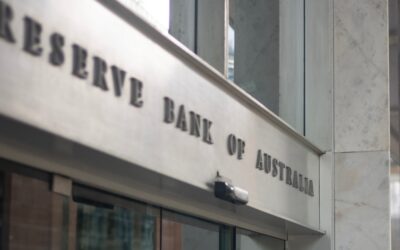In this article:

Starting October 1, 2025, the Australian Government is rolling out major changes to its Home Guarantee Scheme, opening the door for more first-home buyers across the country.
Through the expanded 5% deposit scheme, the Federal Government will guarantee a portion of any eligible First Home buyer’s (‘FHB’) home loan, to allow them to purchase a home without needing to save a 20% deposit or needing to pay Lenders Mortgage Insurance (‘LMI’).
For many, saving a 20% deposit feels like an insurmountable task, particularly when renting.
According to Prime Minister Anthony Albanese’s media release announcing the expansion of the scheme, “the median home price in Australia today is $844,000 and 5 per cent of that is $42,200.”
“The last time $42,200 covered the 20 per cent deposit for a median home was 2002, which shows the generational scale of this change.”
This initiative is directed at addressing the deposit challenge for FHB’s, but it’s important to understand both the opportunities and the potential risks.
So, what’s changing and are you going to be able to apply?
What is the Home Guarantee Scheme?
It is an Australian Government initiative designed to help eligible first-home buyers and other groups enter the property market by reducing the deposit hurdle.
The Scheme, along with other federal government grants and initiatives is administered by ‘Housing Australia’.
The Key Features:
1. Low Deposit Requirement:
Buyers can purchase a home with as little as a 5% deposit.
The government guarantees up to 15% of the property’s value, allowing buyers to avoid paying Lenders Mortgage Insurance (LMI), which is typically required for deposits under 20%.
2. Eligibility:
There are certain requirements to qualify, such as the need for Australian Citizenship, the loan type, minimum age requirements, income requirements and so on.
3. Participating Lenders:
Not all lenders or banks offer loans that are under the scheme. Housing Australia works with over 30 different lenders, but you need to be careful when applying or speaking to lenders.
You need to ensure they’re a ‘Participating Lender’.
What’s Changing with the First Home Guarantee?
The government has significantly expanded the scheme to make it more accessible and realistic for today’s property market.
Here are the key updates effective from October 1:
1. Unlimited Places: The previous cap on the number of available guarantees per year has been removed. This means every eligible Australian first-home buyer can now apply without the fear of missing out on a limited spot. Are you eligible?
2. No More Income Caps: The income thresholds that previously restricted eligibility have been scrapped. This allows more first-home buyers, including those with higher incomes, to access the benefits of the scheme.
3. Higher Property Price Caps: The property price caps have been increased across the country to better reflect current market values. This gives buyers a wider range of properties to choose from in their desired locations. For example, the cap in Sydney has risen to $1.5 million, and in Brisbane, it’s now $1 million. (See the end of this article for the entire list of price caps).
4. Simplified Regional Access: The separate Regional First Home Buyer Guarantee has been merged into the main First Home Guarantee. This simplifies the process for buyers outside major cities, ensuring they have the same unlimited access to the scheme.
How to Apply for the Home Guarantee Scheme
1. Check your eligibility using the Home Guarantee Scheme Eligibility Tool (available from October 1, 2025).
2. Review the new property price caps for your area to ensure your chosen property qualifies.
3. Contact a Participating Lender and submit your application for the scheme.
4. Lenders will submit eligible applications to Housing Australia and process your pre-approval.
5. Find a place to call home!
The Benefits for First-Home Buyers
These changes are set to deliver significant advantages for those looking to get onto the property ladder. The primary goal is to reduce the time it takes to save for a home, which has become one of the biggest barriers to entry.
Buy Sooner
The standout benefit is the ability to purchase a home with as little as a 5% deposit. For an average Australian household, saving a 20% deposit can take over a decade. By reducing this to 5%, the scheme can shave years off the saving process.
Let’s consider an example. For a $700,000 property, a 20% deposit is $140,000. A 5% deposit is just $35,000. By buying sooner, you could save tens of thousands of dollars in rent and start building equity in your own home instead.
Avoid Lenders Mortgage Insurance
Typically, borrowers with less than a 20% deposit are required to pay Lenders Mortgage Insurance (LMI). This is an insurance policy that protects the lender, not the borrower, and can add tens of thousands of dollars to the upfront cost of buying a home.
Under the Home Guarantee Scheme, the government guarantees up to 15% of the property’s value. This acts as a substitute for the LMI requirement, potentially saving you a significant amount of money at the time of purchase.
Potential Challenges and Considerations
While the expanded scheme offers a fantastic opportunity, it’s not a one-size-fits-all solution. It’s crucial to weigh the benefits against the potential financial implications.
Higher Loan Amount and Interest Costs
Purchasing with a smaller deposit means taking on a larger loan. A 95% Loan-to-Value Ratio (LVR) means higher monthly repayments compared to someone who bought with a 20% deposit. Over the life of a 30-year loan, this will also result in paying more in total interest. While you save on LMI upfront, you need to be sure you can comfortably manage the higher ongoing repayments.
Risk of Increased Property Prices
Government incentives that boost buyer demand can sometimes put upward pressure on property prices, especially for entry-level homes. The RBA and other market analysts have noted that the expanded scheme could fuel short-term price growth. This means that while the scheme helps individuals buy sooner, it could also contribute to the very affordability issues it aims to solve. This makes it even more important to buy a property that is within your financial means.
Lender Serviceability Still Applies
Even with a government guarantee, you must still meet your chosen lender’s serviceability criteria. Lenders will assess your income, expenses, and existing debts to ensure you can afford the loan repayments, now and if interest rates rise in the future.
Is the New Scheme Right for You?
The decision to use the First Home Guarantee Scheme depends entirely on your personal and financial situation. For many renters struggling to save a large deposit in a rising market, the ability to buy sooner and avoid LMI could be a game-changer. The savings on rent could potentially outweigh the extra interest paid over the loan term.
However, if you are not paying rent or are in a position to save a 20% deposit without significant hardship, you might find it more beneficial to aim for a larger deposit to reduce your loan size and long-term interest costs.
Speak with the Experts
Navigating government schemes and the mortgage market can be complex. The changes to the First Home Guarantee Scheme present a new set of opportunities, and it’s important to get them right. An experienced mortgage broker can help you understand your options, assess your borrowing capacity, and compare products from a wide panel of lenders.
If you’re a first-home buyer curious about what the new scheme means for you, we’re here to help.
Contact your local YBR representative today, and we’ll get you sorted.
Property price caps from 1 October 2025
| Location | Current Property Price Cap | Property Price Cap effective 1 October 2025 |
| NSW – capital city and regional centre | $900,000 | $1,500,000 |
| NSW – other | $750,000 | $800,000 |
| VIC – capital city and regional centre | $800,000 | $950,000 |
| VIC – other | $650,000 | $650,000 |
| QLD – capital city and regional centre | $700,000 | $1,000,000 |
| QLD – other | $550,000 | $700,000 |
| WA – capital city | $600,000 | $850,000 |
| WA – other | $450,000 | $600,000 |
| SA – capital city | $600,000 | $900,000 |
| SA – other | $450,000 | $500,000 |
| TAS – capital city | $600,000 | $700,000 |
| TAS – other | $450,000 | $550,000 |
| ACT | $750,000 | $1,000,000 |
| NT | $600,000 | $600,000 |
| Jervis Bay Territory and Norfolk Island | $550,000 | $550,000 |
| Christmas Island and Cocos (Keeling) Islands | $400,000 | $400,000 |
* Regional centres are (1) in New South Wales – Illawarra, Newcastle and Lake Macquarie, (2) in Victoria – Geelong, and (3) in Queensland – Gold Coast and Sunshine Coast.



